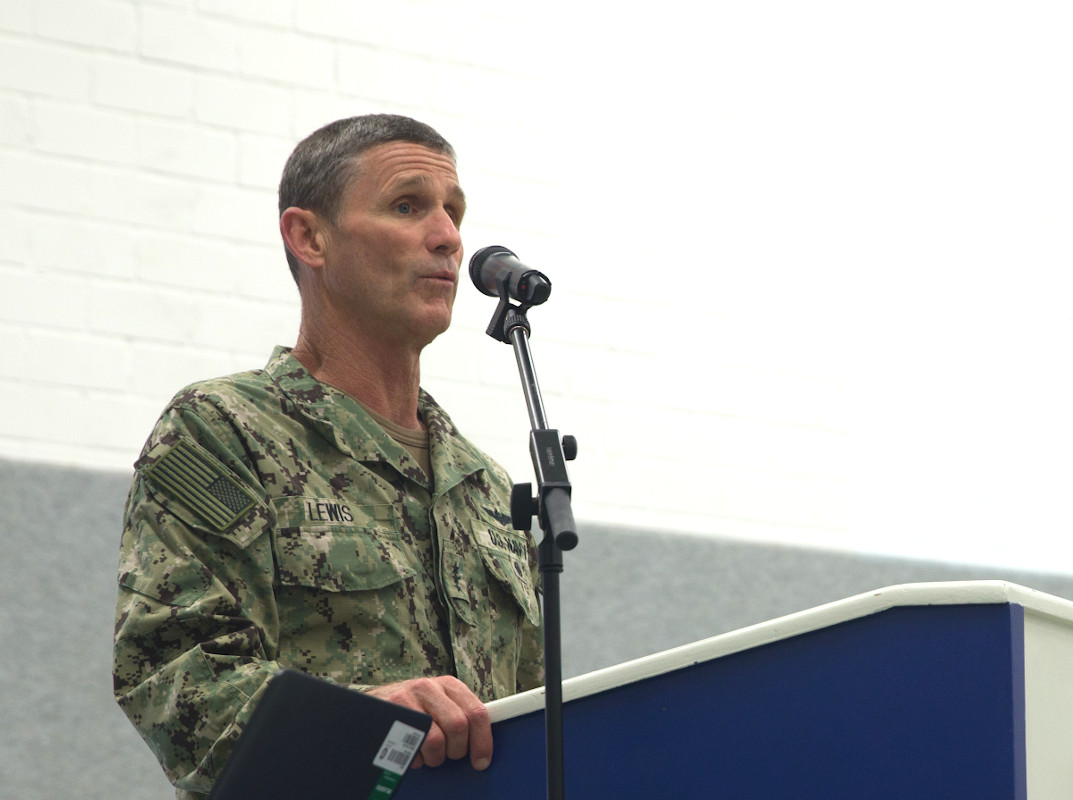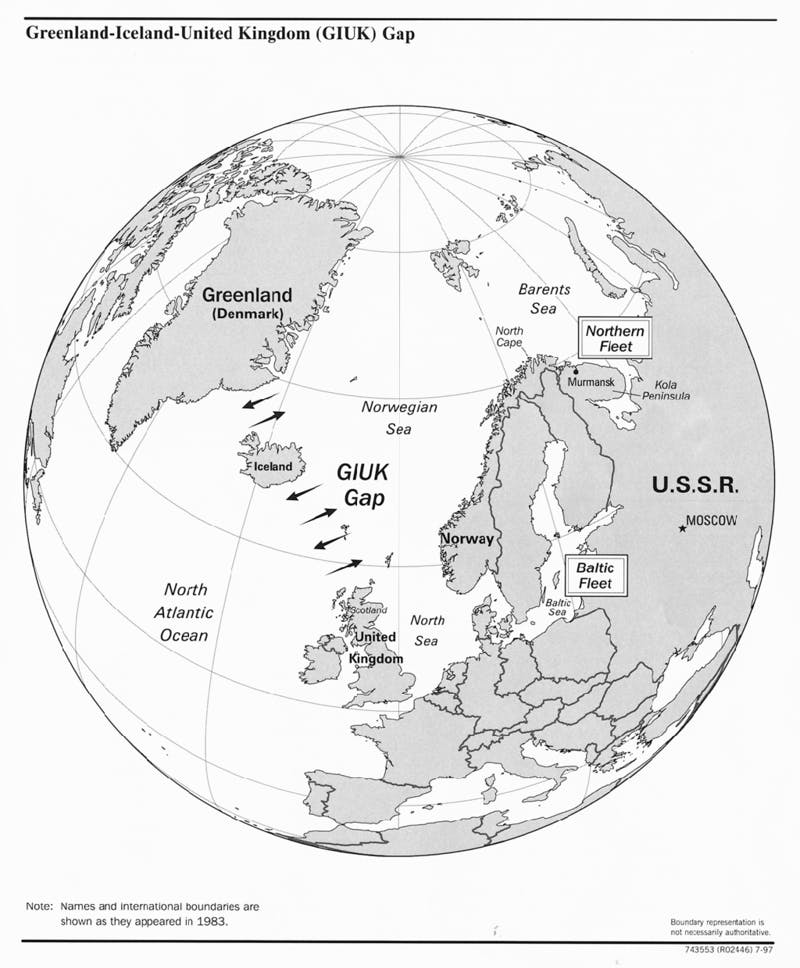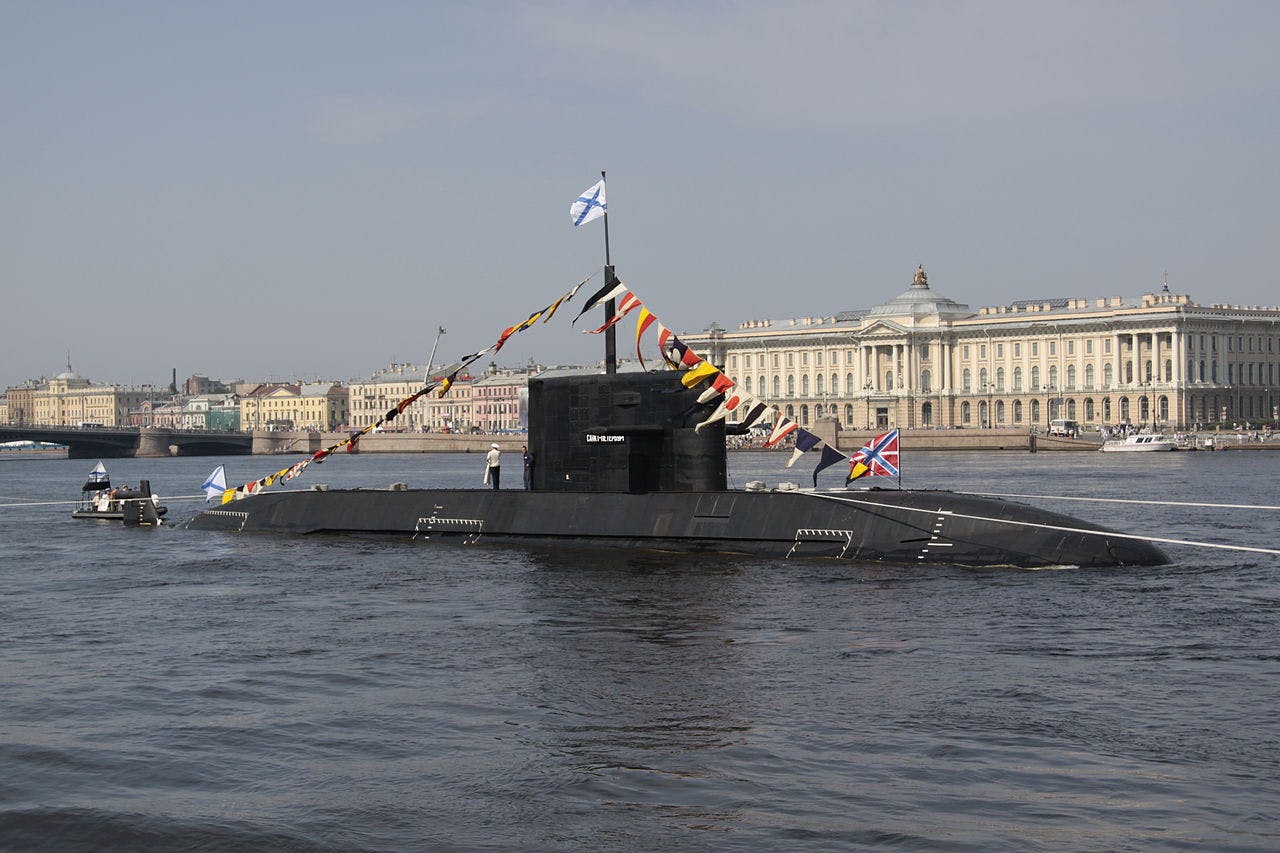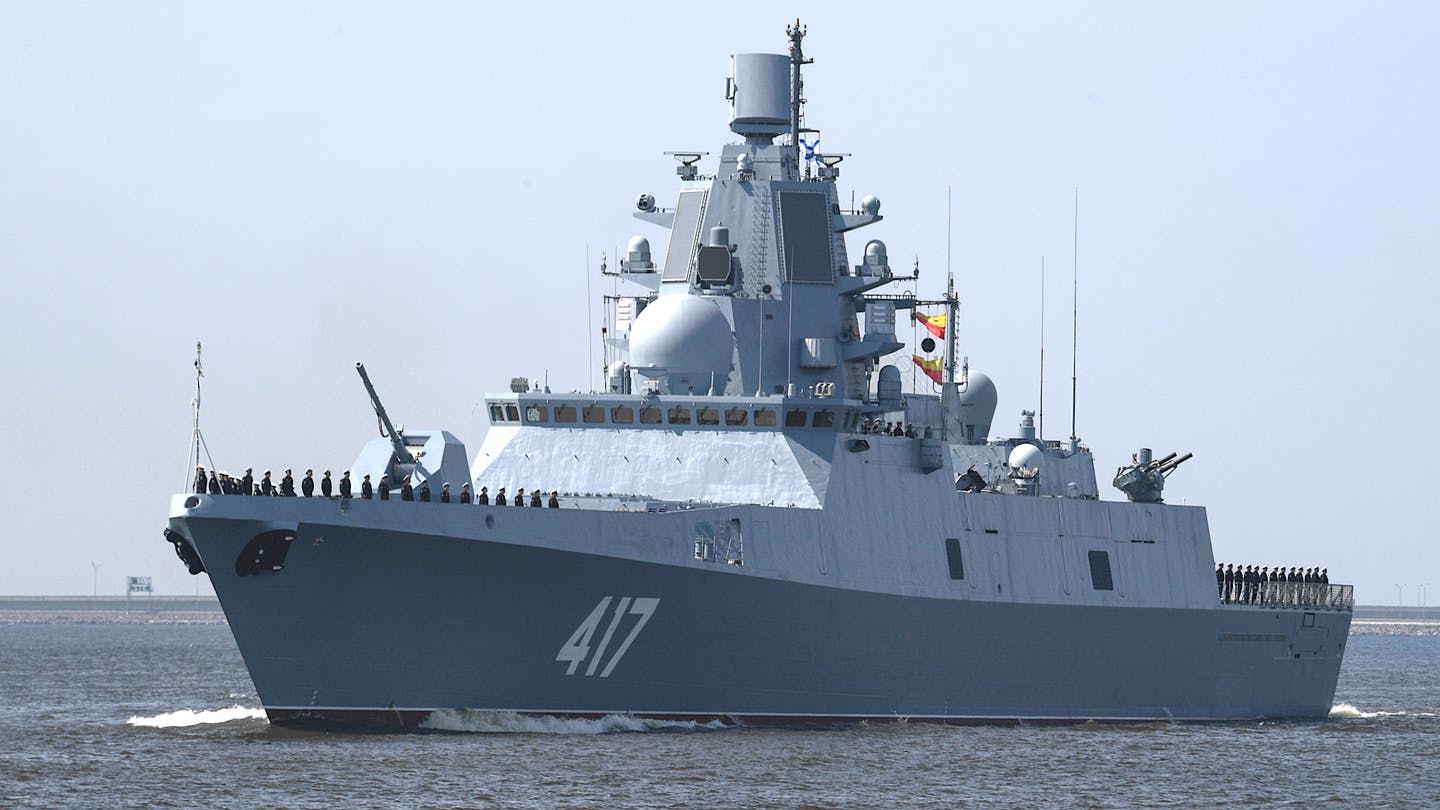A senior U.S. Navy officer says that his service no longer considers the East Coast of the United States as an “uncontested” area or an automatic “safe haven” for its ships and submarines. This is a product of steadily increased Russian submarine activity in the Atlantic Ocean, including the deployment of more advanced and quieter types that can better evade detection.
U.S. Navy Vice Admiral Andrew “Woody” Lewis made these comments at a gathering the U.S. Naval Institute and the Center for Strategic and International Studies think tank jointly hosted on Feb. 4, 2020. Lewis is the commander of the Navy’s 2nd Fleet, which the service reactivated in 2018 specifically to address the surge in Russia’s submarine operations in the Atlantic. This fleet, headquartered at Naval Support Activity Hampton Roads in Virginia, reached full operational capability in December 2019.
“Our new reality is that when our sailors toss the lines over and set sail, they can expect to be operating in a contested space once they leave Norfolk,” Lewis said. “Our ships can no longer expect to operate in a safe haven on the East Coast or merely cross the Atlantic unhindered to operate in another location.”
“We have seen an ever-increasing number of Russian submarines deployed in the Atlantic, and these submarines are more capable than ever, deploying for longer periods of time, with more lethal weapons systems,” he continued. “Our sailors have the mindset that they are no longer uncontested and to expect to operate alongside our competitors each and every underway.”

Lewis did not offer any specific details on the total number of Russian submarines the U.S. military believes are on patrol in the Atlantic at any given time compared to previous years. There has been significant debate about the exact scale of Russia’s undersea activities, especially compared to peaks in the Soviet Navy’s operations at the height of the Cold War, and whether the Kremlin has only been able to generate the additional deployments by pulling resources from the Pacific region.
However, it’s undeniable there has been at least a relative spike in Russia’s submarine activity in the Atlantic in recent years. In October 2019, Norweigan state broadcaster NRK
reported that the country’s top military intelligence agency, the Norwegian Intelligence Service (NIS), also known as the Etterretningstjenesten or E-tjenesten, was monitoring the largest single Russian submarine exercise since the end of the Cold war, involving at least 10 submarines, eight of which were nuclear-powered types, including two nuclear-powered attack submarines from the Project 945A Kondor class, also known as the Sierra II class.

NRK‘s report also said that the E-tjenesten believed that the goal of the exercise was to demonstrate the Russian Navy’s continued ability to deploy a large number of submarines far into the Atlantic while remaining largely undetected. This, in turn, showed the ability of that force, which might have included ballistic missile and guided-missile submarines, the latter of which may be able to carry Zircon hypersonic cruise missiles in the future, to hold targets on the East Coast of the United States at risk.
As The War Zone
noted at the time, the exercise could also give Russian submarines an opportunity to train on flooding the so-called GIUK Gap – standing for Greenland, Iceland, and the United Kingdom – which refers to paths between the Norweigan Sea and the North Atlantic Ocean. It could also demonstrate their ability to maintain a defensive posture off the shores of Norway to present a threat to NATO members and protect Russia’s own assets in the far north, including its naval bases in the northwest region of the country and ballistic missile subs sailing hidden under the Polar ice cap.

“The Kalibr-class cruise missile, for example, has been launched from coastal-defense systems, long-range aircraft, and submarines off the coast of Syria,” U.S. Admiral James Foggo, the commander of U.S. Naval Forces in Europe and Africa, had said in 2018. “They’ve shown the capability to be able to reach pretty much all the capitals in Europe from any of the bodies of water that surround Europe.”
Though last year’s exercise was a particularly large demonstration of Russia’s submarine capabilities, it does appear to be indicative of the kind of increasing challenges the Navy is seeing in the Atlantic, as a whole. Despite limited defense budgets, the Kremlin continues to invest heavily in the development and fielding of newer and more advanced submarines that are better able to elude U.S., as well as NATO, forces.
One of the War Zone‘s sources said that a large number of Navy submarines, ships, and maritime patrol aircraft spent weeks in the fall of 2019 attempted, without success, to locate the Project 885 Yasen class guided missile submarine Severodvinsk after it reportedly deployed into the North Atlantic. The type, which can carry up to 40 Kalibr missiles, among other weapons, is known for having an especially low acoustic signature.
Russia has two further improved Project 885M Yasen-M class subs under construction now and plans to eventually build at least six of these upgraded versions, in total. The Yasen-M notably includes a new reactor that features an updated cooling system that reportedly further reduces the noise the submarine generates.

The Russian Navy also launched a new special mission submarine, the K-139 Belgorod, a modified Oscar II class guided-missile submarine, last year. You can read the War Zone‘s complete analysis of this boat here, but suffice to say it appears to have significant intelligence-gathering capabilities and will also reportedly be able to carry Russia’s new and controversial Poseidon long-range nuclear-powered and nuclear-armed ‘doomsday’ torpedo.
Belgorod is just one of Russia’s fleet of special-purpose submarines, which also includes the unique Project 10831 Losharik spy submarine. This boat was heavily damaged in a fire on July 1, 2019, but the Russian Navy plans to repair it and return it to service.
Russia’s more advanced submarine fleets also include diesel-electric types, including the Project 636 Varshavyanka class, or Improved Kilo class, and the Project 677 Lada class, both of which are attack submarine types. The latter of these features an air-independent propulsion system, which makes it especially quiet.

Increased Russian naval activity in the North Atlantic is also not entirely limited to submarines. Vice Admiral Lewis highlighted how the USS Mahan, an Arleigh Burke class destroyer, was in the middle of training when it was tasked with monitoring the Vishnya class spy ship Viktor Leonov, in December 2019. The Viktor Leonov caused something of a stir when the U.S. Coast Guard announced that it had received reports that the ship was sailing in an “unsafe manner” off the coasts of South Carolina and Georiga. It also operated offer the coast of Florida for a time.
There was never any indication that the Coast Guard had corroborated those reports and it was unclear where the originated from in the first place. The Russian ship, which has made numerous trips to the Western Hemisphere over the years, left waters off the East Coast of the United States before the end of the year. It then returned for a time to the waters off Florida in January 2020.
Earlier in 2019, the Navy had also notably shadowed Russia’s first-in-class Project 22350 frigate Admiral Gorshkov as it sailed in the Caribbean as part of world tour following its commissioning. This warship is the Russian Navy’s most modern vessel to date.

Lewis said that all of this has impacted how the Navy prepares ships and submarines and their crews for deployments, with a greater focus on high-end operations during pre-deployment exercises and a greater emphasis on operational security in case someone is watching. 2nd Fleet, which does not technically have any ships assigned to it and shares administrative space with U.S. Fleet Forces Command at Hampton Roads, is primarily responsible for overseeing these preparations.
“Each one of these certification events gets more and more complex, more and more what we would call high end,” Lewis explained. Recent composite unit training exercises that the 2nd Fleet has overseen, which are capstone events for the deployment of larger groups of warships, such as carrier strike groups and expeditionary strike groups, “are the best and most challenging operating I’ve ever done in my time in the Navy,” he continued.
The U.S. Navy had also announced in 2018 that it planned to eventually create a submarine “aggressor” unit that could help train ship and submarine crews, as well as those on maritime patrol aircraft, to respond to the growing submarine threat in the Atlantic, as well as that of Chinese submarines in the Pacific. It could also help in the development of new tactics, techniques, and procedures for both submarine and anti-submarine warfare.
“We talk about how we fight,” Vice Admiral Lewis said. “We have to tie that to how we train, because we’re never going to be better than how we train.”
From his description of the situation in the North Atlantic, it sounds like Navy ships, submarines, and aircraft have increasing opportunities now to put that training to the test in what might he been considered routine transits a decade ago.
Contact the author: joe@thedrive.com
